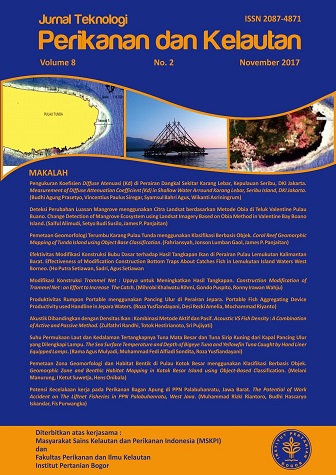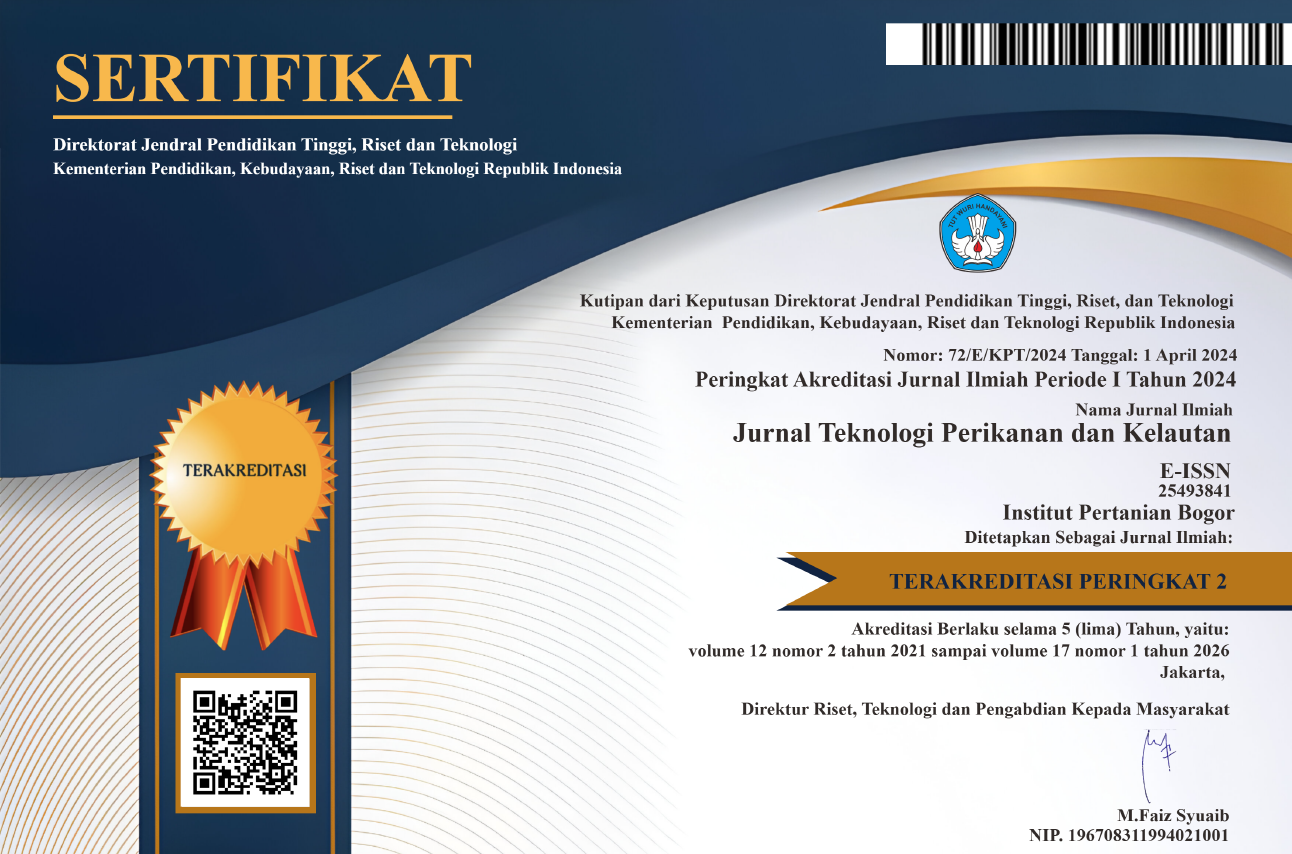AKUSTIK DIBANDINGKAN DENGAN DENSITAS IKAN: KOMBINASI METODE AKTIF DAN PASIF
Abstract
Fisheries acoustics has two main division namely active and passive acoustics. Various acoustic studies with active methods have been conducted to assess the relationship between acoustics with fish density, but combination both mactive and passive methods has never been done to the same fish aggregation. Combining these two methods is expected to deliver an information related to fish density and its trend with both active and passive methods. This study was conducted on tilapia (Oreochromis niloticus) in controlled condition of 50, 100, and 150 fish individuals with total length range of 10-13 cm. Active and passive acoustic data acquisition carried out for 15 minutes on floating net cage of 2 m × 2 m × 1.8 m in dimension using CruzPro PcFF-80 echosounder 200 kHz (active acoustics) and Dolphin EAR 100 hydrophones (passive acoustics). Active acoustic data is processed using Matlab R2013b to generate value of scattering volume (SV), while passive acoustic data is processed using Wavelab program to obtain the intensity of fish sound in frequency domain, then both are correlated to fish density. The results of SV measurements in fish amounted to 50, 100 and 150 individuals respectively were -45.898 dB, -45,887 dB and -45,888 dB, with the coefficient of determination (R2) reached 0.6583. There is an average decrease in SV in fish totaling 150 individuals suspected to occur due to shadowing effects, also due to small fish used. The highest and lowest intensity of fish sound of 50 fishes in frequency range 0-22 kHz were -28.306 dB and -64.582 dB, 100 fishes were -26.0793 dB and -64.5296 dB, 150 fishes were -28.5246 dB and -64.5679 dB.
Copyright (c) 2018 Zulfathri Randi, Totok Hestirianoto, Sri Pujiyati

This work is licensed under a Creative Commons Attribution-NonCommercial-ShareAlike 4.0 International License.





















